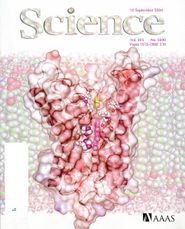Difference between revisions of "Main Page"
Jump to navigation
Jump to search
(PyMOL v2.2 release) |
|||
| (10 intermediate revisions by 4 users not shown) | |||
| Line 1: | Line 1: | ||
__NOTOC__ | __NOTOC__ | ||
{| align="center" width="100%" style="background: #B22222; margin-bottom: 4em; border-bottom: 1px solid #B22222; border-left: 1px solid #B22222; border-right: 1px solid #B22222;" | {| align="center" width="100%" style="background: #B22222; margin-bottom: 4em; border-bottom: 1px solid #B22222; border-left: 1px solid #B22222; border-right: 1px solid #B22222;" | ||
| − | |+ style="font-size: 1.0em; font-weight: normal; color: #FFFFFF; text-align:right; background: #B22222; padding-top:0.5em; padding-bottom: 0.25em; padding-right: 0. | + | |+ style="font-size: 1.0em; font-weight: normal; color: #FFFFFF; text-align:right; background: #B22222; padding-top:0.5em; padding-bottom: 0.25em; padding-right: 0.60em; border-top: 2px solid #B22222; border-bottom: 1px solid #fff;" |hosted by [[File:SBGridlogo2.jpg|140 px|link=https://sbgrid.org/]] |
|} | |} | ||
{| align="center" style="padding-bottom: 3em;" | {| align="center" style="padding-bottom: 3em;" | ||
| Line 30: | Line 30: | ||
|- | |- | ||
! Official Release | ! Official Release | ||
| − | | [ | + | | [https://pymol.org PyMOL v2.2 has been released] on July 24, 2018. |
| + | |- | ||
| + | ! POSF | ||
| + | | [https://pymol.org/fellowship PyMOL Open-Source Fellowship program] accepting applications for 2018-2019 | ||
| + | |- | ||
| + | ! New Plugin | ||
| + | | [[ProBiS_H2O|ProBiS H2O]] is a new plugin for identification of conserved waters in protein structures. | ||
| + | |- | ||
| + | ! Selection keywords | ||
| + | | New [[Selection Algebra|polymer.protein and polymer.nucleic]] selection keywords. Thanks everyone who participated in the [https://goo.gl/forms/r0Ck03VTytZQxN4A2 poll]! | ||
| + | |- | ||
| + | ! Plugin Update | ||
| + | | [[MOLE 2.0: advanced approach for analysis of biomacromolecular channels|MOLE 2.5]] is an updated version of channel analysis software in PyMOL | ||
|- | |- | ||
! New Script | ! New Script | ||
| Line 37: | Line 49: | ||
! New Plugin | ! New Plugin | ||
| [[Lisica|LiSiCA]] is a new plugin for 2D and 3D ligand based virtual screening using a fast maximum clique algorithm. | | [[Lisica|LiSiCA]] is a new plugin for 2D and 3D ligand based virtual screening using a fast maximum clique algorithm. | ||
| − | |||
| − | |||
| − | |||
| − | |||
| − | |||
| − | |||
| − | |||
| − | |||
| − | |||
|- | |- | ||
! New Plugin | ! New Plugin | ||
Revision as of 04:49, 24 July 2018
| The community-run support site for the PyMOL molecular viewer. |
| To request a new account, email SBGrid at: accounts (@) sbgrid dot org |
| Tutorials | Table of Contents | Commands |
| Script Library | Plugins | FAQ |
| Gallery | Covers | PyMOL Cheat Sheet (PDF) | Getting Help |
|
|
 A Random PyMOL-generated Cover. See Covers.
|
